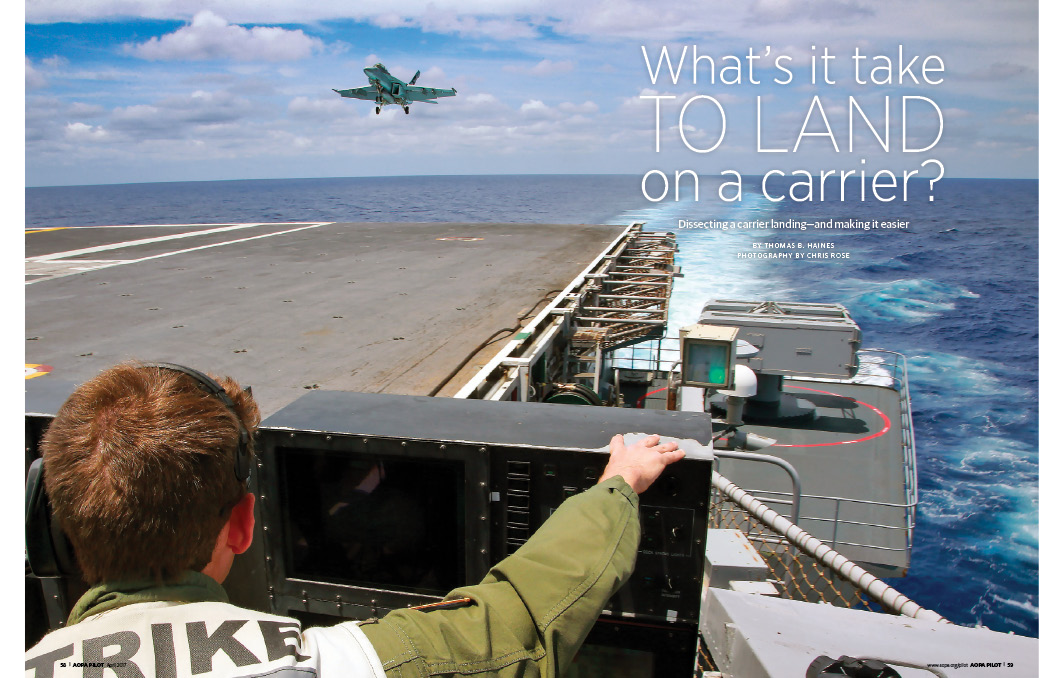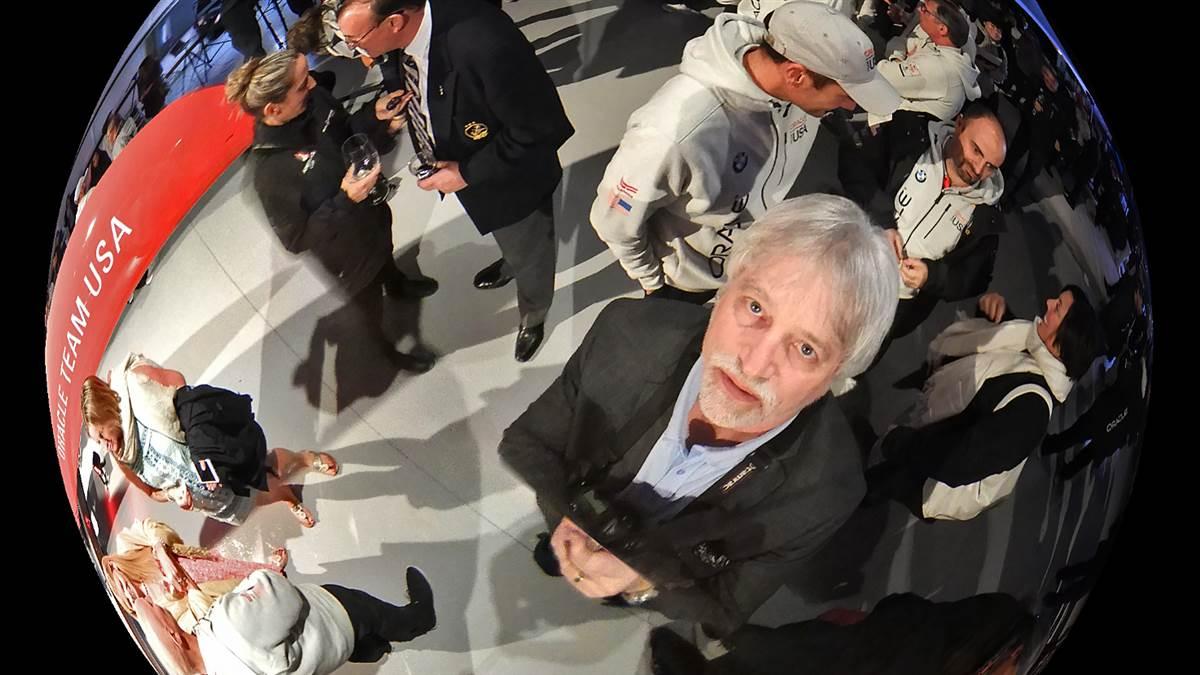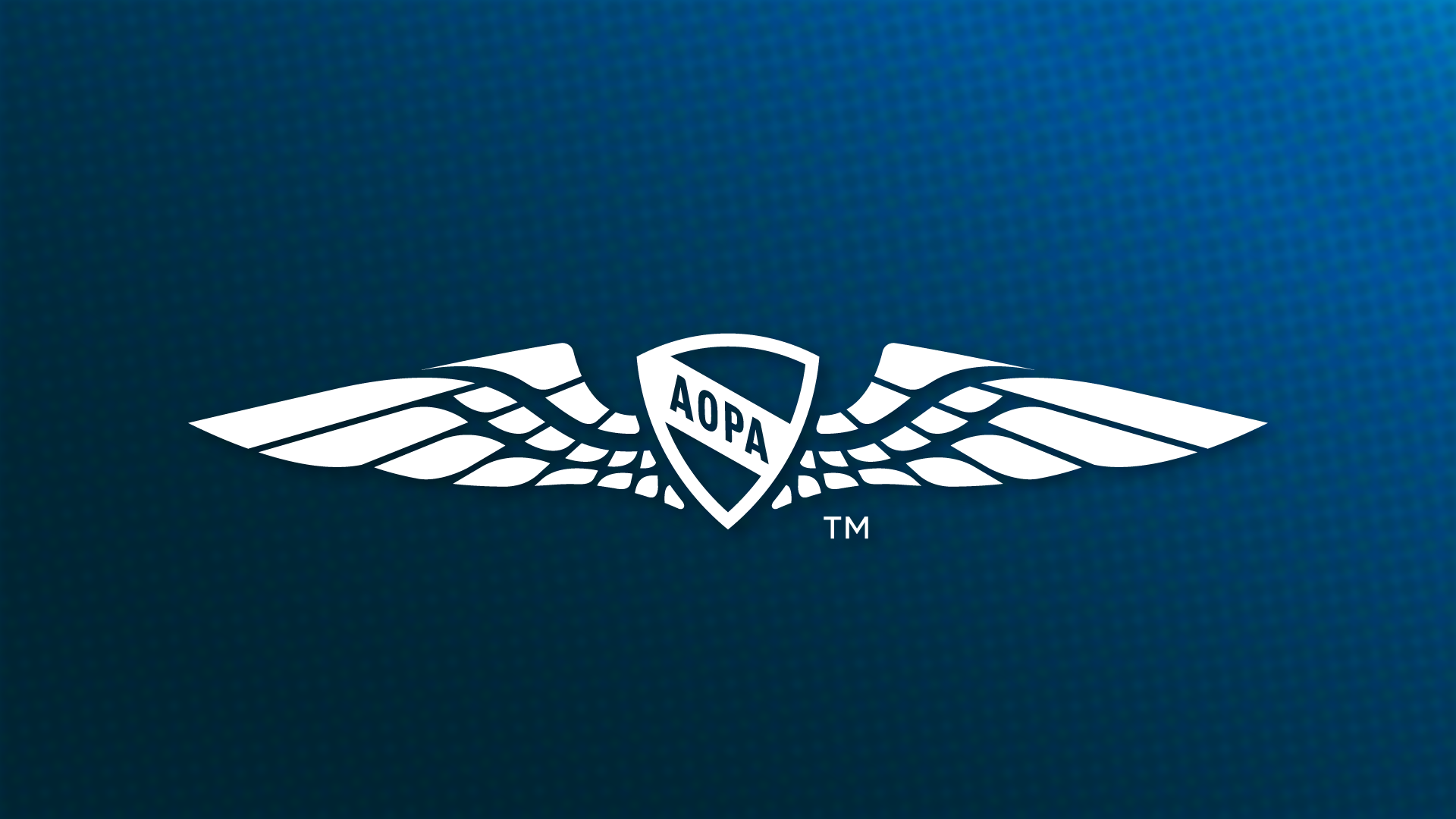Letters from our April 2017 issue
Sticking the landing
I thoroughly enjoyed Thomas B. Haines’s article “What’s it Take to Land on a Carrier?” in the April 2017 AOPA Pilot. What a thrill it must have been to be on board the USS George Washington (CVN-73).
I served proudly in the U.S. Navy from 1967 to 1971. I was a plane captain on the RA–5C Vigilante, a carrier-borne supersonic reconnaissance jet.
After reading about Tom Haines’s experiences with carrier aviation, I’m curious if I should address future email messages to [email protected] or [email protected]? William Crowl, AOPA 1789433, Wilton, CaliforniaMy unit was RVAH-1 stationed at Naval Air Station Albany, Georgia. We deployed on board the USS Saratoga (CVA 60) to the Mediterranean in 1968 and to Vietnam, Gulf of Tonkin Bay—off North Vietnam—on board the USS Ranger (CVA-61) in 1970.
My job was with the jet on the flight deck, witnessing and working thousands of carrier takeoffs and landings. It was important work performed by very young and dedicated pilots and crews.
 Haines’s grasp of the flight deck language, and aircraft landing sequence detail, is impressive. No doubt, there have been many changes and improvements since my day, but I would have liked to have been with him for that trip.
Haines’s grasp of the flight deck language, and aircraft landing sequence detail, is impressive. No doubt, there have been many changes and improvements since my day, but I would have liked to have been with him for that trip.
Jim Crookshank
AOPA 813329
Alliance, Ohio
Loved it. What impressed me the most was how much I learned about carrier operations from the article. Thomas B. Haines sure doesn’t mince words: “Land short and you die.” Great opener. I’m so glad he got to do it and did such a vivid job of sharing it.
David Gustafson
AOPA 579152
Bellingham, Washington
Stability myths
A yearlong study of unstable approaches at Boeing (“The Myth of the Unstable Approach,” easily found online) uncovered many interesting and counterintuitive facts about unstable approaches (“Safety Spotlight: Stabilized Approach Economics”).
The short version is that unstable approaches, while poor piloting technique, do not consistently predict bad landing outcomes.
Statistics from one highly disciplined airline are that if unstable approaches are used to predict landing overruns, out of 50,000 unstable approaches, there will be 49,999 false alarms. At another airline, 15 percent of approaches were “unstable,” but its landing accident rate was, of course, nowhere near that. While precise statistics are not available for general aviation, conclusions are similar.
All too often, regulations and safety guidelines reflect the personality of the regulator or writer, and not the realities of the situation. Nebulous, imprecise, and politically correct phrases such as “pilot error,” “failed to follow procedures,” “loss of control,” and “unstable approach” usually reflect a failure to fully comprehend what went wrong, why, or how to fix it.
Ed Wischmeyer
AOPA 509307
Savannah, Georgia
Crosswind practice
I began flight training in 1958. I was following Barry Schiff’s career back then. I disagree with some of his remarks in “Proficient Pilot: In Search of a Crosswind.”
I like Schiff’s idea of flying above a straight road both for crabbing and cross-control practice. But I think training students and pilots with landing problems with low flights over the runway at about 10 feet, and then again at two to three feet, is valuable to their getting the sight picture. And also to practice holding a slight slip to keep pointing and tracking down the runway in a crosswind.
Yesterday I flew with a member in our club. During his initial checkout, he was having trouble landing. We did the passes down the runway. Yesterday when we flew, he commented how that practice had helped him a lot and that his landings after the checkout were good.
Herbert Rosenthal
AOPA 185842
Bethesda, Maryland
Minor differences
I really had to laugh as I read Mike Busch’s article in the April issue of AOPA Pilot magazine (“Savvy Maintenance: Keep it Minor”).
In 1970 I joined the FAA in the Airframe Branch (of which I eventually became manager) in what is now the Wichita ACO. As a new employee I was sent to Oklahoma City for new employee indoctrination.
Excellent information, as always (“Pilot Counsel: Motor Vehicle Actions”). It might be worth clarifying that the “signature” that allows the FAA to evade the restrictions of the Privacy Act is, for almost all pilots, a checkbox on the computerized MedXPress form, not an actual signature. Stephen D. Leonard, AOPA 419129, Boise, Idaho As well as learning how the FAA does business, we were introduced to FARs 21, 23, 25, and 43. One of the big topics that we spent much time on was the difference between major and minor alterations and also repairs. After much discussion, it boiled down to Busch’s statement: “Any other alteration (modification) is considered minor.” Where have we come after 43 years?
Doug Haig
AOPA 1333269
Emporia, Kansas
Attaboy
I just got an L3 Lynx NGT-9000 put in my Cherokee 180, prepping for the 2020 ADS-B Out mandate and to take advantage of the rebate (“ADS-B: Broadcast Clarity”).
I did a qualification flight on April 8, and did not get all green on the Performance Monitor report—so I contacted the FAA using an email address in an AOPA article, to figure out what I did wrong and make sure I got it right next time. I didn’t really expect them to do more than send me a list of requirements, honestly.
The FAA’s rebate team actually researched the flight, diagnosed the problem, determined the installation met the standards, and sent me my rebate qualification code—in about three business hours.
Maybe my expectations are low, but this response exceeded them dramatically. I don’t have a name at the FAA where I can send an attaboy, but the FAA really crushed it. I am now a fan.
Paul Fortier
AOPA 5642648
Papillon, Nebraska
We welcome your comments. Editor, AOPA Pilot, 421 Aviation Way, Frederick, Maryland 21701 or email ([email protected]). Letters may be edited for length and style before publication.
Hangar Talk
 Smoke from a fog machine had barely cleared before AOPA eMedia Associate Editor David Tulis rushed with cameras blazing toward an emerging rock star at center stage inside a Bermuda race compound (“Water flying,” page 58). “My photojournalism instincts took over as the audience gawked at the vessel in front of them—part ship and part aircraft—during the February unveiling of Oracle Team USA’s red-and-black America’s Cup racing yacht,” said Tulis, who captured himself in this image from a 360-degree camera. “Signs of aviation-inspired engineering were abundant on the No. 17 USA entry. The massive main sail is rigid, tapered, and would be at home on any aircraft—the main difference being its vertical, rather than horizontal, mount. It even uses hydraulically operated flaps similar to those of a Mooney M20 C that I owned.” The thirty-fifth America’s Cup takes place in Bermuda’s Great Sound, where crews of six will “fly” a half-dozen high-tech sailing yachts at speeds up to 60 mph just above the water with the aid of horizontal wings, underwater rudders, and hydraulic foils.
Smoke from a fog machine had barely cleared before AOPA eMedia Associate Editor David Tulis rushed with cameras blazing toward an emerging rock star at center stage inside a Bermuda race compound (“Water flying,” page 58). “My photojournalism instincts took over as the audience gawked at the vessel in front of them—part ship and part aircraft—during the February unveiling of Oracle Team USA’s red-and-black America’s Cup racing yacht,” said Tulis, who captured himself in this image from a 360-degree camera. “Signs of aviation-inspired engineering were abundant on the No. 17 USA entry. The massive main sail is rigid, tapered, and would be at home on any aircraft—the main difference being its vertical, rather than horizontal, mount. It even uses hydraulically operated flaps similar to those of a Mooney M20 C that I owned.” The thirty-fifth America’s Cup takes place in Bermuda’s Great Sound, where crews of six will “fly” a half-dozen high-tech sailing yachts at speeds up to 60 mph just above the water with the aid of horizontal wings, underwater rudders, and hydraulic foils.
